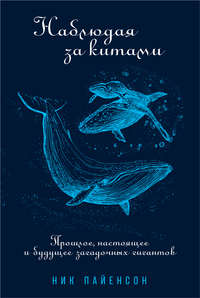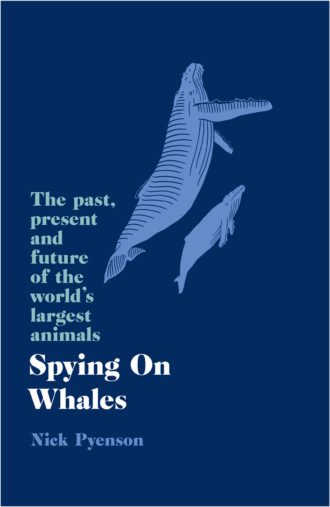
Полная версия
Spying on Whales: The Past, Present and Future of the World’s Largest Animals


Copyright
William Collins
An imprint of HarperCollinsPublishers
1 London Bridge Street
London SE1 9GF
WilliamCollinsBooks.com
This eBook first published in Great Britain by William Collins in 2018
Copyright © 2018 by Smithsonian Institution
Illustrations © 2017 Alex Boersma
Cover illustrations by Alex Boersma
First published in the United States of America by Viking, an imprint of Penguin Random House LLC in 2018 as Spying on Whales: The Past, Present, and Future of Earth’s Most Awesome Creatures
The author asserts the moral right to be identified as the author of this work.
A catalogue record for this book is available from the British Library.
All rights reserved under International and Pan-American Copyright Conventions. By payment of the required fees, you have been granted the non-exclusive, non-transferable right to access and read the text of this e-book on-screen. No part of this text may be reproduced, transmitted, down-loaded, decompiled, reverse engineered, or stored in or introduced into any information storage and retrieval system, in any form or by any means, whether electronic or mechanical, now known or hereinafter invented, without the express written permission of HarperCollins.
Source ISBN: 9780008244460
Ebook Edition © June 2018 ISBN: 9780008244484
Version: 2018-06-04
Dedication
Every author writes with a very specific reader in mind.
I wrote this book for you.
And for my family.
Epigraph
What have we been doing all these centuries but trying to call God back to the mountain, or, failing that, raise a peep out of anything that isn’t us? What is the difference between a cathedral and a physics lab? Are not they both saying: Hello? We spy on whales and on interstellar radio objects; we starve ourselves and pray till we’re blue.
—Annie Dillard, Teaching a Stone to Talk
For the animal shall not be measured by man. In a world older and more complete than ours, they move finished and complete, gifted with the extension of the senses we have lost or never attained, living by voices we shall never hear. They are not brethren, they are not underlings: they are other nations, caught with ourselves in the net of life and time, fellow prisoners of the splendour and travail of the earth.
—Henry Beston, The Outermost House
Contents
Cover
Title Page
Copyright
Dedication
Epigraph
Map
Prologue
PART I: PAST
1. How to Know a Whale
2. Mammals Like No Other
3. The Stories Bones Tell
4. Time Travel on the Fossil Whale Highway
5. The Afterlife of a Whale
6. Rock Picks and Lasers
7. Cracking the Case of Cerro Ballena
PART II: PRESENT
8. The Age of Giants
9. The Ocean’s Utmost Bones
10. A Discovery at Hvalfjörður
11. Physics and Flensing Knives
12. The Limits of Living Things
PART III: FUTURE
13. Arctic Time Machines
14. Shifting Baselines
15. All the Ways to Go Extinct
16. Evolution in the Anthropocene
17. Whalebone Junction
Epilogue
A Family Tree of Whales
Notes
Selected Bibliography
Index
Acknowledgments
About the Publisher
Map
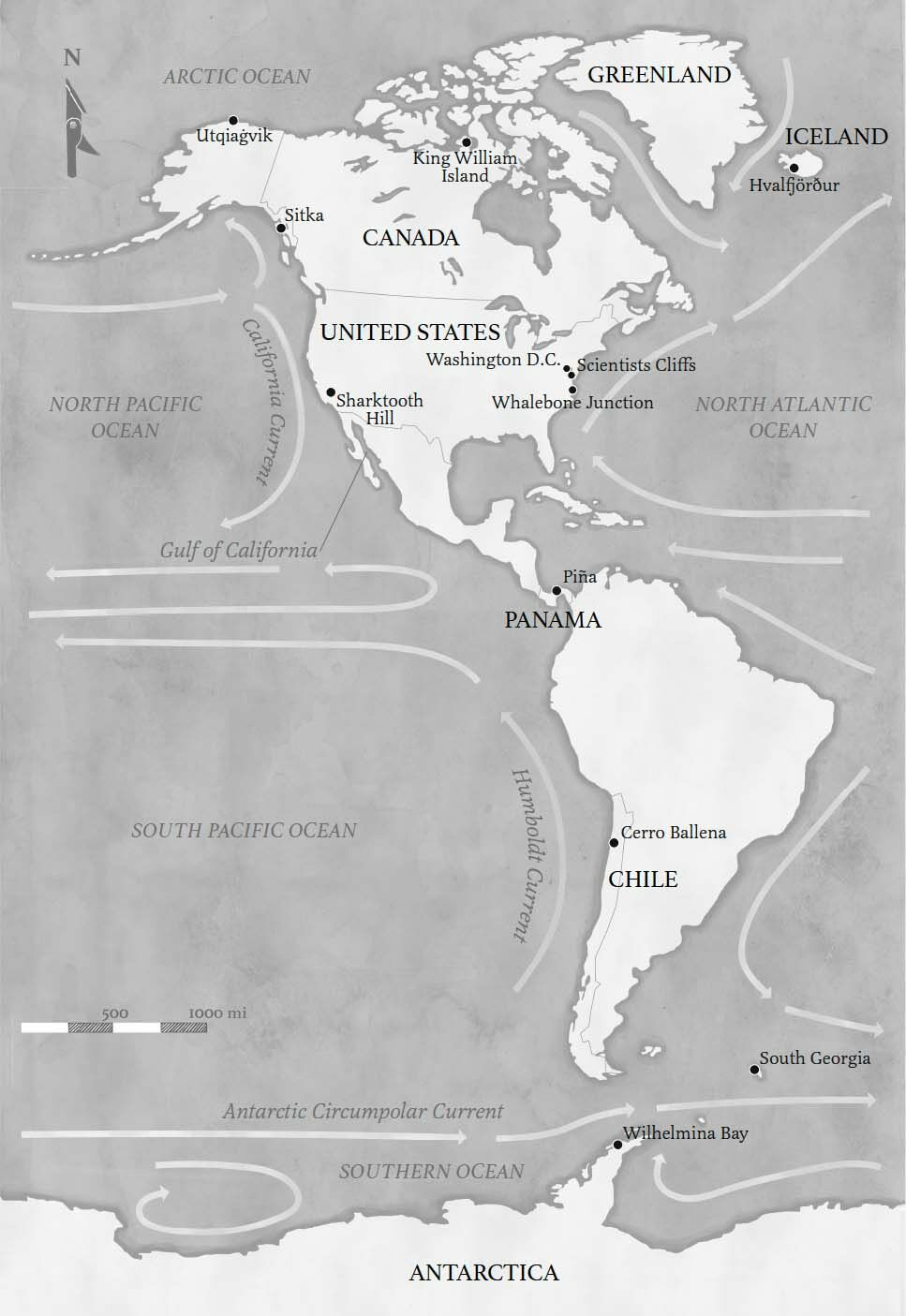

At this very moment, two spacecraft move at over thirty-four thousand miles per hour, about ten billon miles away from us, each carrying a gold-plated copper record. The spacecraft, Voyager 1 and Voyager 2, are meant as messengers: they carry information about our address in the solar system, the building blocks of our scientific knowledge, and a small sampling of images, music, and greetings from around the world. They also carry whalesong.
The long squeaks and moans on the record belong to humpback whales. In the 1970s, when the Voyager mission launched, our view of whales was rapidly changing, from game animals to cultural icons and symbols of a nascent environmental movement. Scientists had recently discovered that male humpbacks produce complex songs, composed of phrases collected under broader themes, nested like Russian dolls that repeat in a loop. Humpback whalesong has evolved even since we started listening as each new singer improvises on the loop, creating new structures and hierarchies that constantly change over years, and across ocean basins.
Whalesong, however, remains a riddle to anyone who isn’t a humpback whale. We can capture its variation, details, and complexity, but we don’t know what any of it truly means. We lack the requisite context to decipher and understand it—or, really, any part of cetacean culture. Even so, we send whalesong into interstellar space because the creatures that sing these songs are superlative beings that fill us with awe, terror, and affection. We have hunted them for thousands of years and scratched them into our mythologies and iconography. Their bones frame the archways of medieval castles. They’re so compelling that we imagine aliens might find them interesting—or perhaps understand their otherworldly, ethereal song.
In the meantime, whales here on Earth remain mysterious. They live 99 percent of their lives underwater, far away from continuous contact with people and beyond most of our observational tools. We tend to think about them only when we glimpse them from the safety of a boat, or when they wash up along our shores. They also have an evolutionary past that is surprising and incompletely known. For instance, they haven’t always been in the water. They descend from ancestors that lived on land, more than fifty million years ago. Since then, they transformed from four-limbed riverbank dwellers to oceangoing leviathans, in a chronicle we can read only from their fossil record, a puzzle of bone shards unevenly spread across the globe.
The little we have learned about whales leaves us unsatisfied because the scales of their lives and facts of their bodies are endlessly fascinating. They are the biggest animals on Earth, ever. Some can live more than twice as long as we do. Their migrations take them across entire oceans. Some whales pursue prey with a filter on the roof of their mouth, while others evolved the ability to navigate an abyss with sound. And then they speak to one another with impenetrable languages. All the while, in the short clip of our own history, we’ve moved from heedlessly hunting them to an awareness that they have culture, just as we do, and that our actions, both direct and indirect, put their fate in jeopardy.
A paleontologist is a good tour guide for what we know about whales, not just because their evolutionary history is profoundly interesting. It’s because we, as paleontologists, are used to asking questions without having all of the facts. Sometimes we’re losing facts: fossils removed from their medium lose clues of context; promising bonebeds are razed to make room for roadways; or bones lay misidentified in a museum drawer. When faced with these challenges, paleontologists turn to inference, drawing on many different lines of evidence to understand processes and causes that we cannot directly see or study—the same approach used by any detective, really. In other words, thinking like a detective is a useful approach to confront the mysteries posed by the past, present, and future of whales.
This book is not a synoptic, comprehensive account of every different species of whale—there are far too many whales to fit into anything shorter than an encyclopedia. Instead, this book presents a selective account, a kind of travelogue to chasing whales, both living and extinct. I describe my experiences from Antarctica to the deserts in Chile, to the tropical coastlines of Panama, to the waters off Iceland and Alaska, using a wide variety of devices and tools to study whales: suction-cupped tags that cling to their backs; knives to dissect skin and blubber from muscles and nerves; and hammers to scrape and whack away rock that obscures gleaming, fossilized bone.
The narratives in this book group into three general sections: past, present, and future. Broadly, I want to answer questions about where whales came from, how they live today, and what will happen to them on planet Earth in the age of humans (a new era that some scientists call the Anthropocene). But these stories don’t cleanly fit into these three temporal silos. Instead, they build on one another and reciprocate because the ways that we need to think about whales require thinking about all the evidence at hand: unraveling the many mysteries of living whales requires a background about their evolutionary past, just as much as the surprises from the fossil record can clarify the meaningful facts about their lives today and into the future.
The first part of the book tells the chronicle of how whales went from walking on land to being entirely aquatic, relying on evidence from the fossil record showing what the earliest whales looked like. These fossils show us details that we couldn’t otherwise know about the history of whales, and I explore exactly how we dig up these clues in the first place. Following fossil whale bones brought me to the Atacama Desert of Chile, where my colleagues and I puzzled over an ecological detective story with the discovery of Cerro Ballena, the world’s richest fossil whale graveyard. How did this site come about, and what does it tell us about whales in geologic time?
The second part examines how and why whales became the biggest creatures ever in the history of life. The challenges of studying organisms as large as the largest species of whales means thinking about the limits of biology, and what exactly organisms at these superlative scales need to do, on a daily basis, to sustain their enormous sizes. While trying to connect muscle to bone at a whaling station, I share another serendipitous find: the discovery of an entirely new sensory organ in whales. What does an organ, lodged right at the tip of a whale’s chin, mean for how, when, and why baleen whales evolved to become all-time giants?
Lastly, the third part explores the specter of the uncertain future that we share with whales on Anthropocene Earth. In the twentieth century alone, whaling in the open oceans killed more than three million whales, reducing many populations to shadows of their baseline abundances. Despite this decimation, no single species went extinct until the first decade of the twenty-first century. Since then, not a whistle or splash of the Yangtze river dolphin has been recorded, and responsibility for the extinction of this species can be placed squarely on our shoulders: we dammed the only river in which it lived. Other species, such as the vaquita, remain on the extinction watch list, numbering fewer than one dozen or two dozen individuals. But the news from the field isn’t entirely dire: some whale species have rebounded from the brink, even expanding to new habitats as climate and oceans change. What can we imagine about our shared future with whales, drawing on their lives today and what we know about their evolutionary past?
Ultimately, the quest to understand whales is a human enterprise. This book is a story not just about knowing whales but also about the scientists who study them. The scientists described in these stories come from a variety of different disciplines, ranging from cell biology and acoustics to stratigraphy and parachute physics. Some are historical but very much knowable through their writings, their specimen collections, and the intellectual questions that they asked. One of the great privileges of my professional life is the opportunity to work at the Smithsonian, which has afforded me not only the latitude to undertake this pursuit but also firsthand access to some of the world’s largest and most important collections of material evidence, be it specimens, scientific journals, or unpublished field notes. Every day, I think about the many generations of scientists before me who handled this same evidence, scratching away at the very same questions, while constrained by the circumstances of their times. My hope is that this book says as much about the inner lives of scientists as it does about whales.
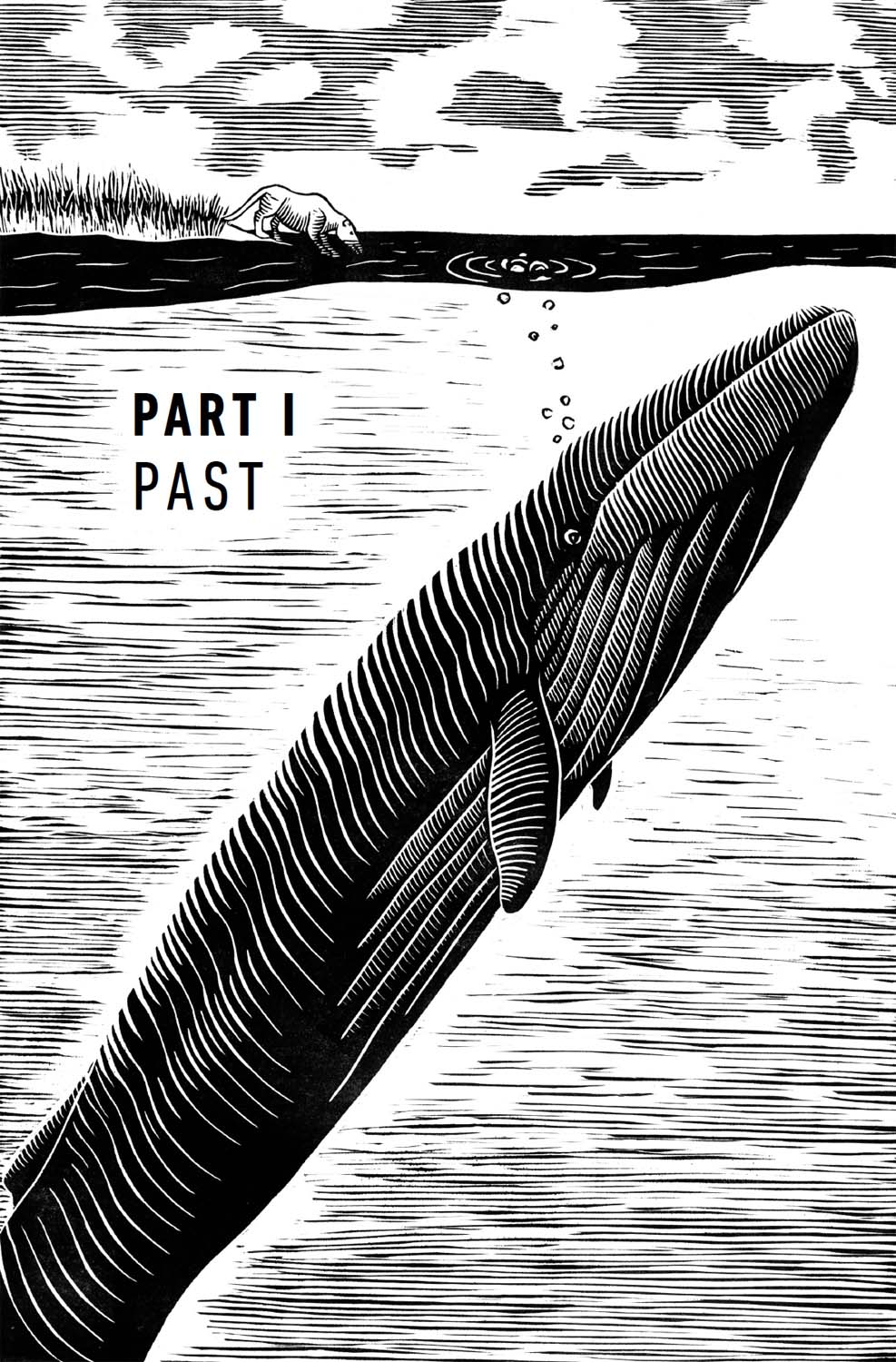

I sat transfixed by a sea littered with a million fragments of ice, all rising and falling in time with the slow roll of the waves. We had spent the morning looking for humpback whales in Wilhelmina Bay, threading our rubber boat between gargantuan icebergs that were tall and sharp, like overturned cathedrals. Now we stopped, cut the engine, and listened in the utter stillness for the lush, sonorous breath of an eighty-thousand-pound whale coming to the water’s surface. That sound would be our cue to close in. We had come to the end of the Earth to place a removable tag on the back of one of these massive, oceangoing mammals, but we took nothing for granted in Antarctica. As we sat waiting on the small open boat, I came to feel more and more vulnerable, a speck floating in a sea of shattered ice. “Don’t fall in,” my longtime collaborator and friend Ari Friedlaender deadpanned.
I struggled to remember how long we had been away from the Ortelius, our much larger oceanic vessel with its ice-hardened steel hull. In every direction, we were enclosed by a landscape of nunataks, jagged spires of rock that pierced the creamy tops of surrounding glaciers. Where the glaciers met the sea, they ended in sheer, icy cliffs towering over the bay. Without a human structure for scale, these landforms seemed both near and far at the same time. This otherworldly scene of ice, water, rock, and light warped my sight lines, bending my sense of distance and the passage of time.
If you hold your fist with your left thumb out, your thumb is the western Antarctic Peninsula; your fist, the Antarctic continent’s outline. The Gerlache Strait is part of a long stretch of inner passageway along the outer side of Antarctica’s left thumb, and Wilhelmina Bay cuts a rough cul-de-sac off the Gerlache. The Gerlache is a hot spot for whales, seals, penguins, and other seabirds, and Wilhelmina Bay is the bull’s-eye. All come here to hunt for krill, small crustaceans that form the centerpiece of Antarctic ocean food webs. Consider your hand again: individual krill are about the length of your thumb, but whales pursue them because they explode into great aggregations, or swarms, during the Antarctic summer. With the right mixture of sunlight and nutrient-rich water, dense clouds of krill form a sort of superorganism that can stretch for miles and concentrate in hundreds of individuals per cubic foot. By some measures, there is more biomass of krill than of any other animal on the planet. Calorie-rich swarms of them lurked somewhere, not far, just under our boat.
Where there are krill in sufficient quantities, there will be whales, but the fundamental problem with studying whales is that we almost never see them, except when they come to the surface to breathe or when we dive, in our own limited fashion, in search of them. Whales are inherently enigmatic creatures because the parameters of their lives defy many of our tools to measure them: they travel over spans of whole oceans, dive to depths where light does not reach, and live for human lifetimes—and even longer.
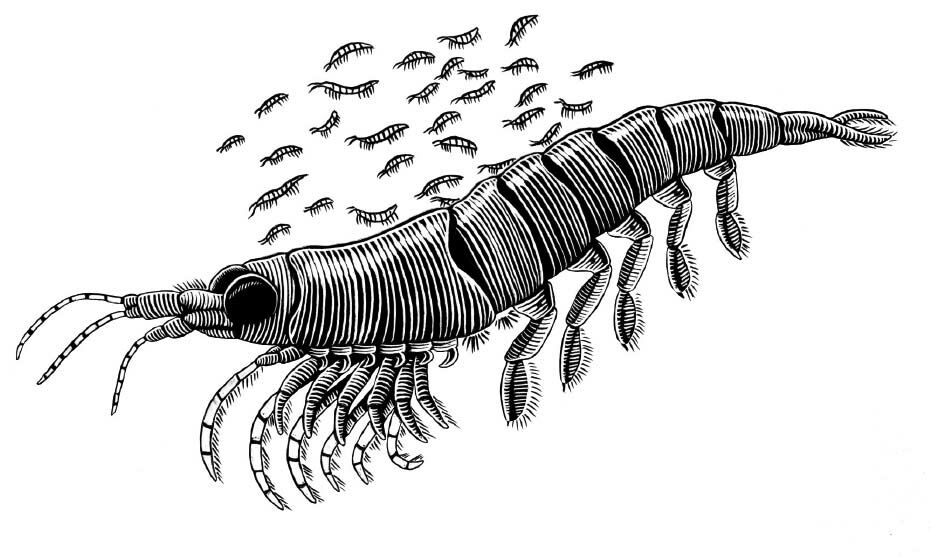
In Wilhelmina Bay our goal was to attach a sleek plastic tag to the back of a whale to record audio, video, depth, changes in the whale’s speed, and even pitch, yaw, and roll. Our tags would provide crucial context for how humpbacks interact with their environment by relaying, in a time-stamped way, how they feed on krill. Ari and his colleagues have tagged and tracked whales along the Antarctic Peninsula for nearly two decades, charting their movements against the backdrop of changes in krill-patch density, water temperature, daylight, and other variables. As climate change warms the poles faster than the rest of the planet, every year counts.
I sat on the gunnel of the boat while Ari scanned from the bow. We were several days into a multiweek expedition with high hopes to tag as many humpbacks as possible—ideally, a pod feeding together—but thus far we had been skunked. Ari stood rigid like a figurehead, holding a twenty-foot-long carbon-fiber pole in folded arms. The pole flexed in synchrony with the swell, the teardrop-shaped tag bobbing at one end. I watched clouds shift slowly overhead, mirroring the dappled quicksilver of the water, and wondered whether any other place on Earth could feel as alien as Antarctica. Then a loud gurgle interrupted my daydreaming, followed by a trumpeting blast of water vapor bursting from flaring, paired nostrils. A whale’s blow.
We knew to expect more plumes of water immediately thereafter. A pod of whales synchronize when they surface to breathe—sometimes nearly simultaneously or split seconds apart. They usually breathe a few times in a row, in quick succession, before resubmerging—unless they’re asleep or truly exhausted, whales tend to act like surfacing is a nuisance and they’d rather be deep underwater. Their tight coordination in breathing likely has a lot to do with maximizing time spent below the surface engaged in the cooperative tasks of finding food and avoiding predators. Some species travel or hunt in pods that are tightly knit family genealogies, while others, such as the humpbacks before us, form short-lived associations, seemingly a matter of happenstance.
“Oh, that’s right,” Ari called out. The vapor from the blow lingered in the cold air. Ari pointed to a small patch of water a dozen yards from the boat, perfectly calm against the waves at the surface. This patch, called a flukeprint, betrayed the whale’s movement, unseen deep below our tiny boat. The single flukeprint bloomed into several, each the size of our boat, rising up from the depths, whirling and spreading into the smooth geometry of a lily pad. We were right. “He’s got buddies,” Ari said. Without the aid of an echo sounder—which would also tip off the whales about our location—we used the ephemeral patterns on the surface to read their path.
We started up the engine, throttling ahead slightly to a spot beyond the last flukeprint. Within seconds, right on cue, a pair of enormous nostrils bubbled at the surface, releasing a thundering tone and then a spray that carried past us as we kept up with the whale. A dorsal fin surfaced, and a second and third blow exploded nearby. “Pull up behind this last one. We have about three more breaths until they go down,” Ari shouted.
We trailed the laggard of the group, maneuvering the boat into position. Ari lowered himself across the bow and held the pole against his torso, extending the tip with the tag just ahead of the dorsal fin as we motored close to the behemoths moving yards away. Then, in a decisive motion, Ari launched the tip of the pole toward the whale’s back, where the tag’s suction cups hit the skin with a satisfying thwack. The whale rolled beneath the surface as we pulled back to pause and wait for it to return. We spotted its sleek, shiny back as it arose again, marked with a neon tag, and we cheered. The whale took one last breath before it raised its monstrously wide tail flukes out of the water and slipped down into emerald darkness with the others. Ari radioed back to the Ortelius. “Taaaaag on,” he said with a hint of swagger as he grinned at me.

Tag on
The whole rodeo of tagging is a bit like sticking a smartphone on the back of a whale, complete with the logistics of getting close enough to a forty-ton mammal in the first place. Just as your smartphone can record movies, track where you go, and automatically rotate images, the same technology—miniaturized and cheap, combining video, GPS, and accelerometers all in one device—has fueled a revolution in understanding how animals move throughout their world. Scientists call this new way of recording organismal movement biologging, and it has captured the interest of ecologists, behavioral biologists, and anatomists, all interested in knowing the details of how animals move through space and over time. Biologging has been especially important for revealing the daily, monthly, and even annual meanderings of animals that are extremely difficult to study. Stick a tag on a penguin, a sea turtle, or a whale, and there’s a chance to know how it swims, what it eats, and everything else it does whenever you’re not around to watch it—which is most of the time, for animals at sea.
The logistics of studying whales places them in a realm truly apart from every other large mammal on land or at sea. To know anything about them in the wild takes time on a boat, sticking a tag on their back, sliding a camera underwater, or spying overhead with a drone—if you’re lucky enough to come upon them in the first place. Biologging is helping us overcome this challenge by giving us a remote view into their lives, an extension of our senses more intimate and sometimes more detailed than any telephoto lens. In the case of humpbacks, tag data have revealed how these gulp-feeding whales lunge at large schools of krill and other prey, oftentimes in coordinated attacks. It’s a form of pack hunting, which might seem strange for a species celebrated as gentle giants. But baleen whales are serious predators, not like grazing cows but more like wolves or lions, pursuing their quarry with strategy and efficacy. Don’t be fooled by their lack of teeth, or just because krill don’t bleat in terror.
Hours later the Ortelius prowled silently through Wilhelmina Bay, with a pair of massive spotlights leading the way in search of icebergs in our path. Outside on the bow, I watched heavy snowflakes drift through the cones of light as Ari unfolded the metal radio antenna that would lead us back to our tag. The tags we were using had to be re-collected to yield their data; we would have to find and physically pluck them out of the water, provided that they’d already been knocked off the whales’ backs. By design, they can last minutes, hours, or even days from the force of suction alone, before being scraped, being bumped, or falling off. Its buoyant neon housing would keep the whole device floating on the surface until we triangulated its position.





